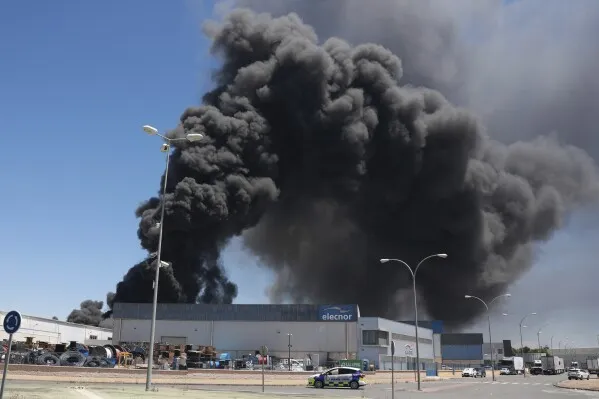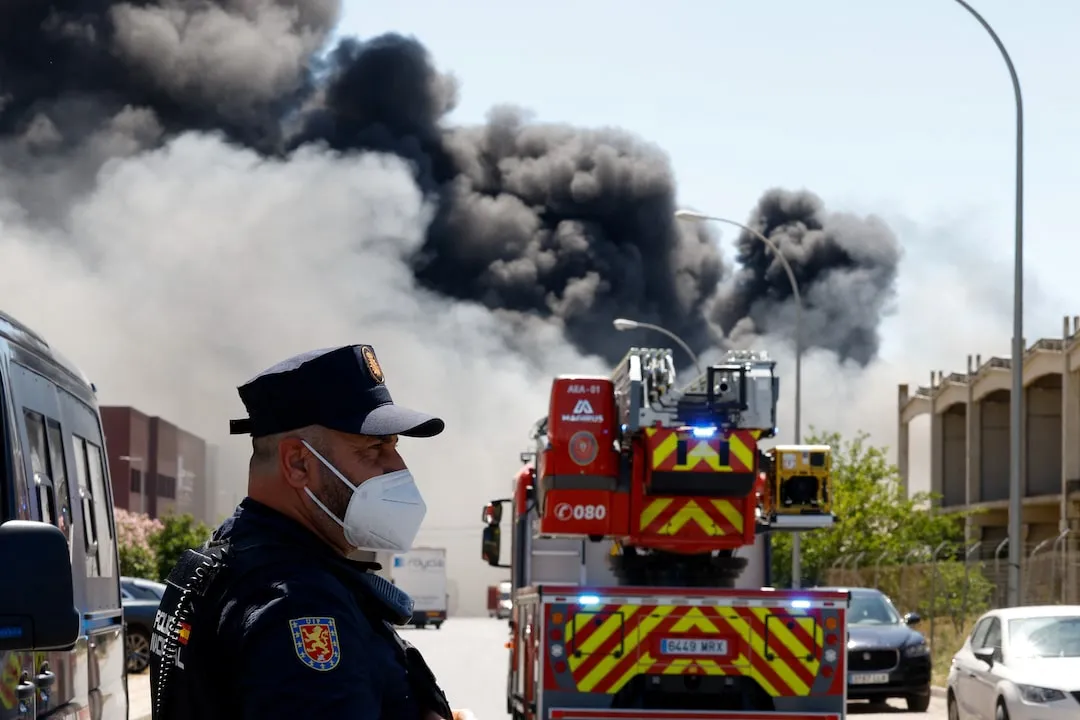Seville: Why the Spanish City is Suddenly Trending in the U.S.
In May 2025, the historic city of Seville, Spain, found itself at the center of global headlines following a massive chemical explosion that triggered a regional emergency. Known for its flamenco dancing, rich Moorish architecture, and vibrant culture, Seville is now trending across search engines for very different reasons — safety, pollution, and disaster response.
This article explores what happened during the Seville chemical fire, the impacts on local communities, the environmental and health risks, and why this incident is generating significant attention from people in the United States and around the world.
What Happened in Seville?

On May 14, 2025, a fire broke out at a chemical warehouse operated by Plainsur, a company specializing in chemical distribution. Located in Alcalá de Guadaíra, just 10 miles east of Seville, the warehouse ignited in a sudden and violent series of explosions.
Huge plumes of thick, black toxic smoke spread across the sky, prompting immediate concern from local authorities and residents. The severity of the incident led to a regional health alert, with thousands of citizens advised to stay indoors, close their windows, and wear face masks.
Health Alert in Seville: Residents Told to Stay Indoors
Authorities responded quickly, declaring a health emergency for all areas within a three-kilometer radius of the blast site. Over 25,000 people were directly affected by the alert, with an estimated 80,000 residents indirectly impacted through school closures, roadblocks, and public warnings.
Residents reported symptoms such as:
- Breathing difficulties
- Eye and throat irritation
- Nausea and dizziness
Though the fire has since been brought under control, the toxic residue in the air has raised serious questions about the long-term effects of chemical exposure in the region.
What Chemicals Were Involved?
As of this writing, the exact chemical substances stored at the Plainsur facility have not been fully disclosed. However, local environmental agencies have confirmed the presence of volatile industrial compounds, which may include:
- Flammable solvents
- Cleaning agents
- Industrial adhesives
- Paint-related chemicals
These types of substances, when ignited, can release harmful carcinogens and particulate matter into the air, posing risks not just to humans but to surrounding wildlife and ecosystems.
Environmental Impact in and Around Seville

Beyond human health, the incident is feared to have a lasting impact on Seville’s air quality, soil health, and nearby water sources. The explosion occurred close to the Guadaíra River, raising concerns about possible chemical runoff.
Key environmental concerns include:
- Air pollution from toxic smoke
- Water contamination from chemical residue
- Soil toxicity in the surrounding industrial zone
- Potential damage to nearby agriculture
Seville is known for its citrus farms, olive groves, and rich farmland. Any contamination could impact local food production and exports.
Why Are Americans Searching for “Seville”?
Several reasons explain the spike in U.S. interest in “Seville”:
- Tourism: Seville is a major European destination, especially popular among American travelers during spring and summer. Many are searching for updates to determine if it’s still safe to travel.
- Global Environmental Awareness: With increasing concern about climate change and industrial safety, environmental disasters like this one trigger global attention.
- Family and Friends Abroad: Many Americans with connections in Spain are looking for information about the situation.
- Comparisons to U.S. Incidents: Americans are recalling previous domestic disasters such as the Ohio train derailment in 2023, drawing parallels and expressing concern about industrial safety worldwide.
Is Seville Safe Now?
As of mid-May 2025, the immediate threat from the explosion has been contained. Emergency responders successfully extinguished the fire, and air quality monitoring is ongoing. Schools and businesses are gradually reopening in areas outside the immediate blast zone.
However, caution is still being advised:
- People living within the previously affected zone are urged to wear masks when outdoors.
- Outdoor activities, especially for children and the elderly, remain limited.
- Authorities continue testing soil and water samples for contamination.
If you are planning to travel to Seville in the coming weeks, it’s advised to:
- Monitor updates from local health authorities
- Check with airlines and hotels regarding any travel advisories
- Avoid areas near Alcalá de Guadaíra unless cleared for safe visitation
Lessons from the Seville Explosion
This tragic event serves as a powerful reminder of the risks associated with chemical storage facilities near populated areas. It also highlights the need for:
- Stronger industrial safety regulations
- Transparent chemical labeling and storage protocols
- Improved emergency response systems
- Greater public awareness and education about what to do in the event of toxic exposure
Moving Forward: How Seville Is Recovering
Seville, a resilient and historic city, is already beginning the process of recovery. Clean-up crews are working around the clock to decontaminate affected areas. The city council has pledged a full investigation into the cause of the explosion, with support from national environmental agencies.
Community health centers have been established to assist those affected by smoke inhalation or chemical exposure. Meanwhile, Seville’s tourism board is preparing updated safety guidelines for visitors to ensure confidence in the city’s readiness.
Conclusion
The chemical explosion near Seville, Spain has shaken a region beloved for its beauty, culture, and history. While the immediate danger has passed, the event leaves behind critical questions about environmental safety, emergency preparedness, and industrial accountability.
As Americans and global citizens continue to search for updates, it’s clear that Seville’s story is no longer just about travel and culture—it’s now a case study in how modern cities must confront and manage the risks of industrial disasters.
Read more about Business and Latest News

